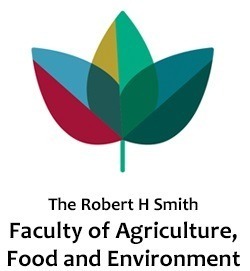Fahima, A. ; Levinkron, S. ; Maytal, Y. ; Hugger, A. ; Lax, I. ; Huang, X. ; Eyal, Y. ; Lichter, A. ; Goren, M. ; Stern, R. A. ; et al. Cytokinin Treatment Modifies Litchi Fruit Pericarp Anatomy Leading To Reduced Susceptibility To Post-Harvest Pericarp Browning.
Plant Sci 2019,
283, 41-50.
AbstractLitchi (Litchi chinensis Sonn.) is a subtropical fruit known for its attractive red pericarp color, semi-translucent white aril and unique flavor and aroma. Rapid post-harvest pericarp browning strictly limits litchi fruit marketing. In the current research, we hypothesized that modification of litchi fruit pericarp anatomy by hormone application may reduce fruit susceptibility to post-harvest pericarp browning. In this context, we hypothesized that cytokinin treatment, known to induce cell division, may yield fruit with thicker pericarp and reduced susceptibility for fruit surface micro-crack formation, water loss and post-harvest pericarp browning. Exogenous cytokinin treatment was applied at different stages along the course of litchi fruit development and the effect on fruit pericarp anatomy, fruit maturation and postharvest pericarp browning was investigated. Interestingly, cytokinin treatment, applied 4 weeks after full female bloom (WFB), during the phase of pericarp cell division, led to mature fruit with thicker pericarp, reduced rate of post-harvest water loss and reduced susceptibility to post-harvest pericarp browning, as compared to non-treated control fruit. Histological sections ascribe the difference in pericarp anatomy to increased cell proliferation in the parenchymatic tissue and the highly-lignified brachysclereid cell layer. In contrast, exogenous cytokinin treatment applied 7 WFB, following the phase of pericarp cell division, significantly increased epidermal-cell proliferation but had no significant effect on overall fruit pericarp thickness and only minor affect on post-harvest water loss or pericarp browning. Interestingly, the late cytokinin treatment also significantly postponed fruit maturation-associated anthocyanin accumulation and chlorophyll degradation, as previously reported, but had no effect on other parameters of fruit maturation, like total soluble sugars and total titratable acids typically modified during aril maturation. In conclusion, exogenous cytokinin treatment at different stages in fruit development differentially modifies litchi fruit pericarp anatomy by induction of cell-type specific cell proliferation. Early cytokinin treatment during the phase of pericarp cell division may prolong litchi fruit storage by reducing fruit susceptibility to post-harvest water loss and pericarp browning.

